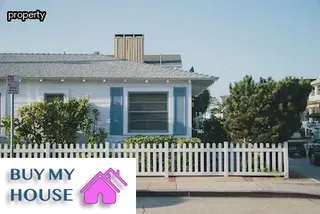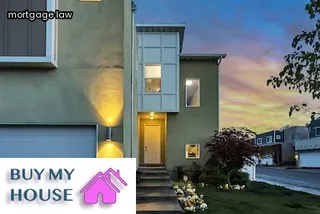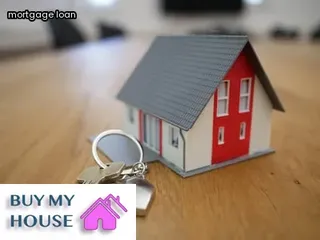Navigating the Minnesota foreclosure process can be a daunting task for homeowners, but understanding the basics of what is involved can help make the process smoother. Foreclosure in Minnesota is a legal process that occurs when a homeowner fails to make their mortgage payments and their lender begins to take action to recover the loan balance.
A Notice of Default will be sent to the homeowner and must be responded to within 30 days by either paying off the loan or proposing an alternate repayment plan. If no response is made, or if no agreement is reached between the parties, then a foreclosure action may begin.
The subsequent court proceedings will determine whether or not a foreclosure sale can occur and how much time must pass before it does so. Homeowners should understand that they are protected by Minnesota's strict foreclosure laws which require lenders to provide proper notification and reasonable attempts at resolving any default prior to initiating proceedings.
Understanding these basic steps can help homeowners prepare for what lies ahead when navigating the Minnesota foreclosure process.

Taking action to prevent foreclosure in Minnesota is key for homeowners who are struggling to make mortgage payments. The first step is to contact a HUD-approved housing counselor.
These counselors can provide advice, mediation services, and assistance with loan modifications and other solutions that help keep people in their homes. Next, it’s important to understand the foreclosure process in Minnesota and become familiar with the state’s foreclosure timeline and laws.
This includes knowing when the foreclosure process begins, what notices must be sent by lenders prior to filing a notice of default, and how long homeowners have before they are evicted. Homeowners should also take steps to evaluate their options for resolving their financial hardships such as refinancing or applying for a loan modification program or forbearance agreement with their lender.
Finally, it's critical to stay organized throughout the process by keeping all documents related to the loan modification application process together in one place and tracking all deadlines for submitting paperwork. With these steps, homeowners in Minnesota can take action toward preventing foreclosure on their home.
There are various options available for Minnesota homeowners facing foreclosure. Many people think that a foreclosure is an unavoidable situation, but this is not always the case.
Homeowners can take action to avoid foreclosure and protect their property rights. One of the first steps is to contact a foreclosure prevention counselor and explore their options with them.
Another option is to negotiate with lenders in order to work out an alternative payment plan or loan modification. Lastly, it may be possible for homeowners to receive assistance from state-funded programs such as Minnesota Homeownership Center or Minnesota Housing Finance Agency’s Foreclosure Prevention Program.
People facing foreclosure should consider all available options in order to make the best decision for their particular situation.

Navigating the Minnesota foreclosure process is a challenging task for homeowners. Knowing the difference between pre-foreclosure and post-foreclosure in Minnesota can help you understand your rights and responsibilities as a homeowner.
Pre-foreclosure in Minnesota happens when a mortgage lender files a notice of default against the property owner, which begins a period of time during which the homeowner has an opportunity to make up past due payments or negotiate with the lender. Post-foreclosure in Minnesota occurs when the lender takes possession of the home either through foreclosure or through a deed in lieu of foreclosure.
In either case, it is important that homeowners be aware of their rights so they can take steps to protect their interests. Additionally, they should be aware of what actions lenders may legally take once they have taken possession of the property.
With this knowledge, homeowners can better navigate the Minnesota foreclosure process and ensure their rights are being observed throughout it.
The decision to reinstate a mortgage before a foreclosure sale is one that should not be taken lightly. Homeowners should weigh the pros and cons of this action carefully to make the most informed decision possible.
Reinstating a mortgage can provide homeowners with the ability to keep their home, as well as restore their credit score quicker than if they were to go through a foreclosure sale. However, reinstatement may require a large sum of money, which might be more than some homeowners are able to pay.
This may also be difficult for those who don’t have access to other forms of financing or cash reserves. Additionally, some lenders may not accept partial payment from borrowers and require payment in full in order for them to stop the foreclosure process.
It is important for homeowners considering reinstating their mortgage before a foreclosure sale to research what options are available and understand the potential risks associated with each one before making a final decision.

Unfortunately, homeowners in Minnesota may be vulnerable to foreclosure scams. It is important for potential victims to be aware of the signs and take proactive steps to protect themselves.
Homeowners should be wary of anyone who claims they can stop foreclosure proceedings overnight or guarantee a loan modification for a fee. Additionally, it is wise for homeowners to double check any paperwork that needs to be signed; all foreclosure-related documents should include contact information for the lender and borrower's rights under federal law.
Furthermore, if something does not seem right or does not pass the smell test, homeowners should seek legal advice from a qualified professional before signing anything. Finally, it is important to stay informed about the current laws and regulations related to foreclosures as fraudulent activities are constantly changing.
When homeowners are facing mortgage default, they should explore all available options before taking any action. This includes investigating loan modification options and seeing if they qualify for refinancing, or a repayment plan to help them get back on track with their mortgage payments.
It is important to understand the foreclosure process in Minnesota, as it can vary from other states. Homeowners should look into the legal requirements and timeframes for filing notices of default and sale, as well as the redemption period and other details regarding foreclosure proceedings.
Additionally, homeowners should be aware of the consequences of a foreclosure and how it may affect their credit status in the future. Knowing these aspects of the process will allow homeowners to make informed decisions about whether or not pursuing foreclosure is the best solution for them.

Under Minnesota law, a deficiency judgment is a court ruling that requires a homeowner to pay the difference between what was owed on their mortgage and what the home sold for in foreclosure. This judgment can be taken out by either the lender or another party that may be involved in the foreclosure process such as a guarantor.
The amount of the deficiency judgment generally depends on how much money is left unpaid after the sale of the foreclosed property. Deficiency judgments are not able to be discharged through bankruptcy, so it is important that homeowners understand this potential outcome when navigating the foreclosure process.
Additionally, lenders have up to six years to pursue a deficiency judgment in Minnesota, although they are typically taken out closer to the time of the foreclosure sale. Homeowners should take special care to understand all aspects of deficiency judgments when going through a foreclosure so they can properly plan for any potential payments they may be required to make in order to satisfy the debt.
When a homeowner falls behind on mortgage payments, the foreclosure process begins. The lender will usually contact the borrower to arrange a payment plan or discuss possible options for loan modification.
If the borrower is unsuccessful in making payments or fails to respond to the lender, they may be sent a notice of default. This notice states that the borrower has failed to make their mortgage payments and must take corrective action within a certain period of time, typically 30 days.
If corrective action is not taken within this time frame, the lender may proceed with foreclosing on the home. During this process, it is important for homeowners to understand their rights and consult an experienced attorney who can help them better understand all their options before the foreclosure sale takes place.

In Minnesota, homeowners facing foreclosure often receive a common preforeclosure notice. These notices typically come from the lender or mortgage servicer and are intended to alert the homeowner of their financial obligation or delinquency and provide guidance on possible solutions.
The most common preforeclosure notices include a Notice of Intent to Foreclose, Demand for Payment Letter, and Notice of Default. A Notice of Intent to Foreclose is the earliest legal step taken by a lender or mortgage servicer and serves as an official warning that foreclosure proceedings may begin soon; it must be sent at least 60 days prior to initiating any other legal action.
A Demand for Payment Letter is usually sent after a homeowner has missed several payments and effectively requests that the delinquent debt be paid in full within 30 days; failure to do so can result in an acceleration of the loan balance and/or initiation of foreclosure proceedings. Finally, a Notice of Default informs homeowners that they have defaulted on their loan agreement and provides them with an opportunity to cure their default before further action is taken (such as sale or foreclosure).
It is important for Minnesota homeowners facing foreclosure to know these common preforeclosure notices, understand what each means, and review all documents carefully before taking any steps towards resolving the issue.
Minnesota is one of several states with a judicial foreclosure process. This means that a court must first issue a judgment of foreclosure in order for the lender to take possession of the home.
The process is initiated when the homeowner fails to make mortgage payments. In Minnesota, homeowners are also protected from lenders through laws such as the Homeowners Bill of Rights, which outlines the rights of homeowners facing foreclosure and prohibits certain practices by lenders.
The state also requires lenders to provide homeowners with notice before beginning proceedings and gives them time to make up any delinquent payments or negotiate an alternative arrangement with their lender. This can help delay the foreclosure process in some cases, allowing homeowners more time to find an affordable solution and remain in their homes.

Yes, it is possible to stop a home from going into foreclosure in Minnesota. Homeowners need to be aware of how the process works and understand their options for avoiding foreclosure.
One way homeowners can prevent foreclosure is by working with their lender to create an alternate repayment plan that fits their budget. This option allows homeowners to make regular payments on the mortgage while catching up on any past due amounts over time.
Another option is to refinance the existing loan and secure a more favorable interest rate and payment terms that fit within their budget. A third possibility is for homeowners to use money from family or friends as a down payment on the loan, thus reducing the amount owed each month.
Additionally, many local organizations in Minnesota provide counseling services and financial assistance that can help homeowners stay current on their mortgage payments. In some cases, the lender may even agree to forgive part or all of what is owed if certain conditions are met by the homeowner.
Regardless of the situation, it’s important for Minnesota homeowners in danger of foreclosure to explore these potential solutions as soon as possible so they can remain in their homes without facing further financial hardship.
Foreclosure is a difficult and often devastating process for homeowners to go through in the state of Minnesota. It is important for homeowners to understand the different types of foreclosure that exist in the state if they are facing this situation.
The most common type of foreclosure in Minnesota is judicial foreclosure, which occurs when a lender files a lawsuit against a homeowner for failure to make payments on their mortgage. This type of foreclosure requires the lender to go through due process in order to take possession of the home.
Another type of foreclosure commonly seen in Minnesota is non-judicial foreclosure, which requires less paperwork and court involvement than judicial foreclosures. This can be done when lenders hold a deed-in-lieu or an agreement between them and the homeowner.
Non-judicial foreclosures are typically completed faster than judicial foreclosures, but can still take months or even years depending on how complex the case is. Lastly, there is statutory redemption, which allows homeowners to redeem their property after it has been sold at auction during a judicial foreclosure.
In this case, they must pay all past due amounts, legal fees and other costs associated with the sale before they can regain ownership of their home. Understanding these different types of foreclosures will help homeowners navigate this complex process more effectively and hopefully preserve their rights as much as possible.

If you’re behind on your mortgage payments, understanding the options available to you can help you make the best decision for your current financial situation. Your first step should be to contact your lender and express your concerns.
Many lenders are willing to work with homeowners to set up alternative payment plans or loan modifications that will help reduce the amount of debt owed. If necessary, an attorney can assist in negotiating with lenders to ensure all options are considered.
Additionally, many states have government programs in place that offer free counseling and advice from trained professionals such as housing counselors, real estate agents and attorneys. These services provide assistance in navigating the complex foreclosure process and in some cases may even provide financial aid to cover back mortgage payments or other expenses related to foreclosure proceedings.
Finally, it is important to remember that while a foreclosure may seem like a daunting prospect, there are resources available that can help you get back on track financially and protect your rights as a homeowner.
Letting a home go into foreclosure can be an extremely difficult process to navigate and can have long-term repercussions. It is important for homeowners to understand the various effects that come with a foreclosure, such as the loss of equity, damage to credit, and financial instability.
Additionally, homeowners must consider whether selling their home before it goes into foreclosure is an option. If they decide to reinstate their loan after missing mortgage payments, they should know what happens during a preforeclose situation and if there is assistance available for those struggling with mortgage payments.
Lastly, not paying off mortgage deficiencies in Minnesota could result in legal action taken against the homeowner and make it difficult to purchase or rent another property.
Foreclosure is a serious issue that can have devastating financial, emotional and social impacts on an individual or family. When it comes to the state of Minnesota, there are many reasons why people let their homes go into foreclosure.
For some, the primary cause is due to an inability to keep up with mortgage payments after experiencing a job loss or cut in wages; others may have taken out loans they could not afford, while others may have simply gotten in over their heads with debt. In addition, medical bills and other unexpected expenses can quickly add up causing homeowners to fall behind on their payments.
Whatever the case may be, navigating the Minnesota foreclosure process can be a daunting task for those who find themselves in this situation. That's why it's essential for homeowners to understand all their options and take action as soon as possible in order to avoid further financial hardship and preserve their ability to purchase another home in the future.

Foreclosure in Minnesota is a lengthy and complicated process, but homeowners need to understand the timeline of their foreclosure in order to have a chance at saving their home. Generally speaking, it takes anywhere from five months to two years for the foreclosure process to be completed.
After a homeowner misses a payment, the lender will usually send out an initial notice of intent to foreclose which begins the pre-foreclosure period. The pre-foreclosure period can last up to six months, during which time the homeowner has an opportunity to cure the default or negotiate with lenders for other options such as loan modification or repayment plans.
If no resolution is reached during this time period, then the lender will begin formal foreclosure proceedings by filing a Notice of Foreclosure Sale with county court. This document must be posted in public view for four weeks before foreclosure can take place.
Once the sale is completed, ownership of the property transfers to the buyer and the homeowner is evicted if they have not already moved out. Therefore, it can take anywhere from five months to two years for a house in Minnesota to go through foreclosure depending upon how long it takes for all of these steps to be completed.
Foreclosures in Minnesota, like most other states, are a complicated process that can be difficult for homeowners to navigate. In general, foreclosures occur when a homeowner fails to make payments on their mortgage for an extended period of time.
The lender then begins the foreclosure process by sending the homeowner a notice of default. If the homeowner does not correct the loan delinquency or take any action at this point, the lender may file a lawsuit and obtain an order from the court granting them permission to seize and sell the property.
Once this happens, the property is sold at public auction to satisfy the debt owed. Homeowners should be aware that they may still owe money after their property is foreclosed upon and sold, and that they will be responsible for paying additional legal fees associated with the foreclosure process.
It is important for homeowners to understand their rights and obligations during this process so they can protect their interests.
Foreclosures can be a difficult process for homeowners to navigate, but it's important to understand the downside before moving forward. Foreclosure can have long-term negative impacts on a homeowner’s credit score and ability to secure loans in the future.
It also comes with additional costs such as attorney fees, late payments, and missed mortgage payments, which can add up quickly. In some cases, foreclosure may mean selling the home at a loss or taking on other debts to pay off current mortgages.
Additionally, neighborhoods that have higher rates of foreclosure tend to experience drops in nearby property values which affects all homeowners in the area negatively. Despite these downsides, there are still options available to help people who are facing foreclosure and exploring those options is key when navigating this difficult process.
A: In Minnesota, a Mortgage Default Notice is sent by the lender to the borrower when the loan payments are past due. The borrower then has six months to cure the default before a foreclosure sale is scheduled. After a foreclosure sale, a Redemption Period of six months begins and gives the borrower an additional opportunity to redeem or reinstate the mortgage.
A: Minnesota homeowners have the right to know when their lender has filed a foreclosure action in court, to be informed of any changes in the case, and to receive notification of the sale date. They also have up to six months after the foreclosure sale date to stay in their home before eviction proceedings begin. Additionally, they are entitled to receive a copy of the court order approving the foreclosure sale.